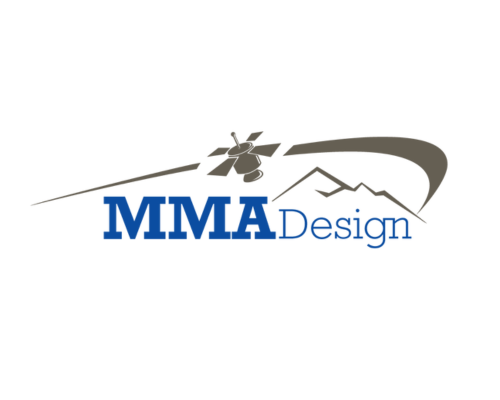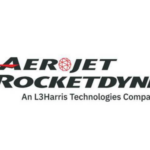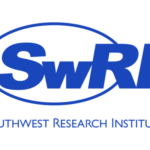Partner News
MMA’s Next-Generation dragNET™ De-orbit and Solar Sail System is ready for launch at the 39th Space Symposium in Colorado Springs
Written by: Space Foundation Editorial Team

Louisville, CO – April 04, 2024 —With thousands of metric tons of debris buzzing around us in low Earth orbit, and an ever-increasing rate of launch in a booming space industry, MMA understands the urgent need for space sustainability. Already an early leader in this critical area, MMA has invested significant internal R+D capital in retooling the flight heritage dragNET™ De-orbit system in order to reduce complexity, parts count and drastically lower costs for our dragNET™ De-orbit System, making space sustainability accessible to all, and supporting industry to affordably and reliably comply with new FCC rules for deorbiting spacecraft in 5 years or less.
The Next-Generation dragNET De-orbit and Solar Sail System consists of heritage, compactly stowed, thin-film membranes and other subsystems that package roughly in the volume of a shoebox. Once deployed, the system creates the drag necessary to passively deorbit a spacecraft, launch vehicle or other space asset. The standard 12.5m2 dragsail is deployed and tensioned using multiple carbon fiber elements that are released from their packaging using stored spring energy. The entire stowed system fits within a standard 15″ Motorized Lightband and protrudes no more than 14 cm (5.5”) into the internal volume of an ESPA ring.
The heritage dragNET, which deploys the same aperture drag sail as the next-gen prototype shown, proved capable of deorbiting a launch vehicle of 800 kg in about 2 years when it successfully deorbited the upper stage of the ORS-3 Minotaur in 2015 (launched 2013, Norad ID 39409). The dragNET can be used to deorbit small satellites as well as launch vehicles or other space assets in low Earth orbit and is easily scalable to other platforms and form factors. Two more dragNETs are currently on orbit awaiting mission completion to deorbit their spacecrafts.
The dragNET design offers key advantages over similar passive or active deorbit systems. Because it deploys close to the spacecraft, it enables a more controlled deployment and deorbit, and since both the deployment and deorbit are passive, it allows precious mission resources, like propulsion, to be conserved for mission critical functions. The dragNET crushes the competition with a 230X area gain ratio (12.5m² deployed, 0.054m² stowed footprint), and due to its robust sail design, it is ensured to avoid tangling or other complications. It is effective at any inclination in LEO and can be added to an existing space asset very late in the integration stage – it can essentially bolt on to a spacecraft or launch vehicle.
The next-gen dragNET leverages flight heritage composite parts, release mechanisms, thin-film membranes, and other critical subsystems, and has completed a comprehensive development testing campaign to ensure high reliability as with the legacy system. Importantly, since the next-gen dragNET has <50% fewer parts over the legacy system, it reduces system complexity, and at 1/2 of the cost of the original, dramatically reduces cost.
The dragNET system’s simple, highly scalable architecture could easily be adapted for other applications such as a shield, solar sail or sunshade. With these applications, the membrane material and/or coatings are tailored to the mission requirements, but the architecture and CONOPS would be the same.
MMA is officially launching this new dragNET system at the 39th Space Symposium at the Broadmoor Hotel in Colorado Springs, CO this April 8-11, 2024. Space Symposium, hosted by Space Foundation since 1984, is the premier assembly for the global space ecosystem. Come by Booth 628 of the Northrop Grumman Exhibit Center South Hall from to see the NG dragNET in action and to talk to our team about adding one to your spacecraft, launch vehicle or other space asset to ensure compliance with the FCC’s <5 year deorbit rule for your mission.
About Space Symposium: Space Symposium, hosted by Space Foundation since 1984, is the premier assembly for the global space ecosystem. The live event, held in Colorado Springs, Colorado, is widely attended by commercial and government leaders, professionals, entrepreneurs, and teachers around the globe. To learn more about Space Symposium, visit www.spacesymposium.org.
About Orbital Debris: Orbital Debris is closely tracked by NASA, the Space Surveillance Network and cooperative nations globally, and is regulated by agencies such as the FAA, NOAA and the FCC. Because humans have been launching objects into space since the late 1950s, space – especially low Earth orbit – is cluttered with hundreds of thousands of pieces of debris, and this threatens key functions of both life on Earth as well as continuing space exploration. Learn more: https://orbitaldebris.jsc.nasa.gov/
About MMA: Space is our passion and exploring is in our DNA.
Headquartered in Louisville, Colorado, our creative and agile team delivers innovative, reliable, ingeniously packaged, disruptive deployable solutions that are revolutionizing the state of the art. From R+D to flight, MMA thinks out of the box to put more in the box for your mission.
Learn more at www.mmadesignllc.com
Media Contact:
Sandy Sorzano
People + Brand
310-621-0266 (mobile)
[email protected]
2000 Taylor Avenue, Suite 200 Louisville, CO 80027
www.mmadesignllc.com


